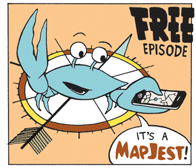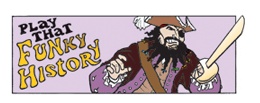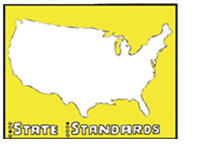












|
|

|
 |
||
 |
"Your presentation this morning was a revelation." Ann McCarthy, gifted teacher in Virginia |
|
|
|
||
The Civil Rights Freedom Train
The United States promised freedom and equality to African-Americans after the Civil War ended in 1865. But for decades there was just a shadow form of citizenship for most of them. Laws separated the races and treated African-Americans unfairly. African-Americans traveled to Northern cities looking for opportunity and freedom. When African-Americans fought and died in World War II and came home to a nation still practicing racism, they decided it was time to make America pay its debt to them. The leaders in that march were Jackie Robinson, Rosa Parks, Martin Luther King Jr., and Thurgood Marshall. This colorful graphic novel will excite reluctant readers, prepare students for standardized tests in history and help homeschooling parents!
Many African-Americans fight for the United States during World War II. But they wonder whose freedom they were fighting for when they come back to a country that is still segregated. “Jim Crow” laws keep African-Americans and whites separate in public places – even baseball fields. What will it take to change the way people think and behave? Who will be brave enough to change this unfair system?
Quick links: (jump down this page)
Comic sample page #1: What did Brown VS Board decide?
Comic sample page #2: How good was Jackie in the Majors?
Topics covered in this comic book
Teacher Guide
Jackie Robinson includes the following topics:
- Where did Jackie Robinson grow up?
- Where did Jackie Robinson practice ball?
- When did Jackie Robinson join the majors?
- How good was Jackie Robinson in the majors?
- Who followed Jackie Robinson?
Chapter 2: Rosa Parks
Seeing Jackie Robinson’s example brings hope to other African-Americans. They begin to plan ways to break down America’s system of discrimination, which treats people differently just because they were born with a different skin color. For example, many African-Americans are tired of the rule that says they must give up their bus seat to any white person who wants it…
The Rosa Parks chapter includes the following topics:
- Where did Rosa Parks grow up?
- How were Alabama buses divided?
- Who demanded freedom on buses?
- Who led the Montgomery boycott?
- Did the Montgomery boycott win?
Chapter 3: Martin Luther King Jr.
Martin Luther King Jr. is a young preacher in Montgomery, Alabama, when Rosa Parks refuses to give up her city bus seat. His ideas about nonviolent protest steer the yearlong boycott to success and are a good match for the legal battles that began the civil rights movement after World War II. His methods gain attention and national sympathy against the unfair practices that African-Americans have had to live with for generations…
The Martin Luther King Jr. chapter includes the following topics:
- Who was in Martin Luther King Jr.’s posse?
- When does Martin Luther King Jr. rap from jail?
- What was Martin Luther King Jr.’s dream?
- When did violence overtake Martin Luther King Jr.?
Chapter 4: Thurgood Marshall
One of the African-Americans who fights the hardest to break down the legal walls is Thurgood Marshall. He experiences discrimination as a young person in Maryland, then he goes to college and becomes a lawyer so he can use the courts to break down unfair laws. His cases around the time of World War II lay the groundwork for the civil rights movement of the 1950s and 1960s. And one day he gets a call from the President to break down one of the biggest legal barriers of all…
The Thurgood Marshall chapter includes the following topics:
- Where did Thurgood Marshall live?
- Where did Thurgood Marshall fight schools?
- What did Brown vs. Board of Education decide?
- Who was the first African-American on the court?
- What did Thurgood Marshall say on the court?




